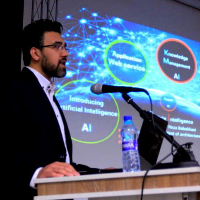Automated Floor Plan Generation by a Combination of Evolutionary Algorithm (Genetics) and Machine Learning (K-Nearest Neighbors and K-Means Clustering)
Design is a fundamental, problem-oriented, purposeful, and comprehensive activity. Despite the widespread use of computers in architecture, more than three decades after their introduction, the design process is still predominantly carried out by humans, starting with hand-drawn sketches which are later translated into digital formats via software. This is due to the fact that computers lack inherent design intuition, which remains a significant challenge in automating the architectural design process. This study aims to explore a novel approach that integrates artificial intelligence (AI) algorithms for the automatic generation of architectural plans. The goal is to develop a system capable of producing designs that meet user requirements while adhering to established rules, regulations, and design standards. The central hypothesis of this research posits that by combining evolutionary algorithms with machine learning techniques, it is possible to create a process that allows machines to approximate a form of design intuition. The methodology of this research includes a combination of literature review, documentation analysis, and quantitative data analysis. The study employs genetic algorithms, supervised learning algorithms, and Python libraries. The findings indicate that using feature vectors for supervised learning can facilitate the identification of optimal designs, thereby introducing a degree of "relative intuition" into machines. Additionally, the application of genetic algorithms for exploring the design space and optimizing plans based on the dimensions of the user's land proves to be effective. Finally, by storing design process experiences through algorithms, it is possible to create a foundation for reinforcement learning, which improves the system’s performance over time. In conclusion, the study presents the Automated Design Intelligence (ADI) Theory as a new theoretical framework for automating architectural design, offering a potential shift in how design processes can be approached through AI and machine learning.
-
Automated design and drawing of architectural plans by combining evolutionary algorithms, machine learning and sample-based
*, Azadeh Shahcheraghi, Hossibn Zabihi
Maremat & memari-e Iran, -
The machine learning process in applying spatial relations of residential plans based on samples and adjacency matrix
, Azadeh Shahcheraghi*, Hossin Zabihi
Maremat & memari-e Iran,


